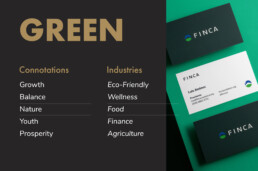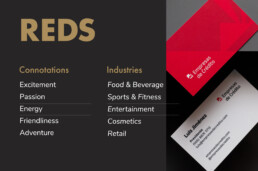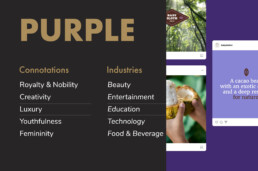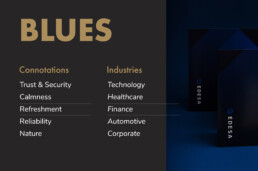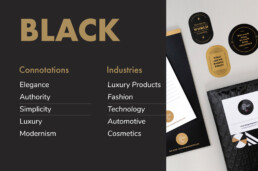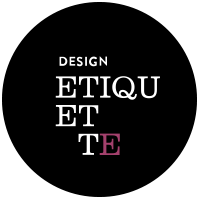Mariana and her team were fantastic to work with. Responsive, understanding, and organized. Most importantly the quality of the work is exceptional. I am tremendously proud to be represented by the branding that Design Etiquette created for my business.
Brandon Chillingworth — Hacked BD
Is Your Brand a Gordon Ramsay Meme?
— Is Your Brand Turning Into a Gordon Ramsay Meme? — Is Your Brand Turning Into a Gordon Ramsay Meme?
Branding, Brand Identity, Strategy
Doing this is the quickest way to destroy your brand and the slowest way to grow your business:
Creating a brand isn’t just about creating a logo or putting together a website. It’s about crafting an unforgettable story, building brand awareness, and creating a connection with your audience.
But here’s where many businesses go wrong: They invest thousands into creating their brand identity, only to hand off their brand’s management to someone who doesn’t fully understand what they’re doing.
Think of branding like high-end cooking.
You hire a world-star chef like Gordon Ramsay to craft a perfectly cooked 5-star Michelin dish, then you hand the recipe off to someone who lacks the skill and knowledge, like your friend from highschool who thinks he’s a chef because he cooks BBQ every Sunday afternoon.
Even though he has the recipe, the dish is a complete fail. It doesn’t have the right flavors, the presentation is sloppy. The magic? Gone. That’s what happens when a business hands off its brand to someone who doesn’t understand design and marketing fundamentals.
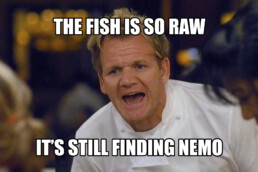
When a low-skilled designer takes over a brand, the core identity gets diluted. You’ll start noticing fonts that were never in your brand book, colors that seem just a little off, (believe it or not, there is a ton of technical skills that go into color management) and visuals that scream ‘DIY.’ Suddenly, the polished, cohesive brand you invested in starts feeling cheap, like a five-star meal that’s turned into a Gordon Ramsay meme.
Consistency is everything in branding. Making this gap in skillset your brand’s nemesis.
When you maintain a consistent identity, customers begin to trust you, and that trust builds loyalty. A great branding agency creates a comprehensive style guide that defines everything from colors to tone of voice to design principles. When you have a solid guide, your branding team can stay on track, and your business can continue to evolve without losing its identity.
To keep your initial brand identity and strategy from falling into oblivion, here are a few actions you can take:
- Build a crystal-clear style guide with your agency, a.k.a your brand book. A brand book isn’t just a document; it’s your brand’s bible. It ensures that everyone, internally and externally, is on the same page.
- Train your team on your brand’s ‘dos’ and ‘don’ts.’ Ensure everyone knows how to speak and present your brand consistently.
- Keep your branding team close. Invest in the best professionals that fit your budget, and keep them on retainer for as long as possible. A long-term partnership ensures your brand stays consistent, evolves with your business, and thrives.
Your brand is your business’s first impression. Don’t let shortcuts or budgets destroy the investment you’ve made.
What’s your biggest challenge with keeping your branding consistent? Let’s talk.
Mariana and her team were fantastic to work with. Responsive, understanding, and organized. Most importantly the quality of the work is exceptional. I am tremendously proud to be represented by the branding that Design Etiquette created for my business.
Brandon Chillingworth — Hacked BD
10 Branding Tips for Business Growth
— 10 Branding Tips for Business Growth — 10 Branding Tips for Business Growth
Branding, Brand Identity, Strategy
This took me 14 years as a brand designer to learn, I’ll teach it to you in 3 minutes.
Branding is constantly evolving, but there are certain principles that will always hold true. After 14 years of building brands and seeing what works, I’ve wrote down the most important elements of successful branding. If you’re looking to build a strong, memorable brand, here’s what you need to know:
1. Clarity Is King:
Your brand needs to be clear and easy to understand for your audience. If people don’t get it, they won’t buy it.
- Be clear on your offer: Make sure your audience knows exactly what you’re selling.
- Keep things simple: Don’t overcomplicate your messaging.
- Create systems: Simplify your processes to help customers quickly understand how to engage with you.
- Make your marketing straightforward: Focus on simplicity to boost your impact.
2. Make Your Offer Irresistible:
Your offer should feel like a no-brainer, making it impossible for your audience to say no.
- Sell the dream outcome, not just your service: Focus on the result you provide, not just the features.
- Use guarantees to minimize risk: Make customers feel safe to take action.
- Stack bonuses to amplify value: Offer extra perks that make the deal even better.
- Make buying frictionless: Remove any barriers to purchase.
3. Know Your Customer:
Building a brand is much easier when you truly understand who you’re speaking to.
- Get to know them by asking questions: Take the time to understand your audience’s needs and desires.
- Identify their biggest pain points: Understand what keeps them up at night.
- Speak their language: Use language and messaging that resonates with them.
- Solve their problems better than the competition: Show how your brand can uniquely meet their needs.
4. Start with Strategy:
Without a solid strategy, your brand will lack direction and focus.
- Define your brand’s positioning and unique value: What sets you apart from competitors?
- Understand your market: Know the trends and the competition.
- Set clear goals for growth: Establish measurable objectives for your brand.
- Build a brand that drives results: Focus on outcomes that contribute to long-term success.
5. Your Brand Identity Is Not Just a Logo:
Your logo is just the start. Your brand is much deeper and more complex.
- Create a complete visual identity: Color, typography, patterns, marketing assets.
- Define your brand’s personality: What values does your brand embody?
- Maintain consistency across all communication: Whether it’s on your website, social media, or packaging, stay aligned.
- Focus on user experience, not just visuals: Your brand should feel right at every touchpoint.
6. You Need 7 Touchpoints Before Making a Sale:
Building trust takes time. On average, you need several interactions before a customer is ready to buy.
- Show up consistently across multiple platforms: Be where your audience is, consistently.
- Educate users about your brand: Provide value through informative content.
- Facts tell, but stories sell: Nowadays storytelling is everything.
- Nurture leads until they’re ready to buy: Stay connected and keep building trust.
7. Branding Is the Act of Building a Brand:
Branding is a continuous process. It’s not just something you do once and forget about—it’s an ongoing effort.
- Build relationships: Your brand is about people, not just products.
- Create an emotional connection with your audience: The best brands evoke feelings and loyalty.
- Deliver a consistent experience every time: From first contact to repeat business, consistency is key.
- Invest in long-term brand value: Branding is an investment in the future of your business.
8. Consistency Builds Trust:
Your audience needs to see and hear the same message repeatedly to build trust.
- Stay consistent in your messaging and design: Everything should align with your brand.
- Show up regularly: Your audience needs to see you frequently to build recognition.
- Reinforce your brand values in everything you do: Make sure your actions match your words.
- Keep delivering on your promises: Trust comes from reliability.
9. Mindset Is Everything:
Your beliefs shape your success.
- Confidence attracts clients: Show up with belief in what you offer.
- Learn from failures and keep going: Every setback is an opportunity to grow.
- Surround yourself with positive people: Build a network of like-minded individuals who encourage growth.
- Take action every day: Momentum compounds over time.
10. Rebranding Can Be the Answer to Business Growth:
A fresh brand identity can be the key to unlocking new opportunities.
- Resonate better with your ideal customers: Sometimes, a shift in messaging or visuals is all it takes.
- Adapt to the times: If your brand isn’t keeping up, it’s time for a change.
- Stand out in a crowded market: Rebranding helps you break through the noise.
- Reinvent your brand to reflect new values, goals, or offerings: Your brand should evolve as your business does.
Want to Build a Stronger Brand or Website?
Let’s talk: Schedule a free discovery call.
Mariana and her team were fantastic to work with. Responsive, understanding, and organized. Most importantly the quality of the work is exceptional. I am tremendously proud to be represented by the branding that Design Etiquette created for my business.
Brandon Chillingworth — Hacked BD
Color Psychology in Brand Identity
— Color Psychology in Brand Identity — Color Psychology in Brand Identity
Branding, Business, Strategy
Exploring The Subconscious Influence of Color in Branding
Color is one of the most important elements in branding. Colors mean different things to different people, playing an important role in shaping every brand’s identity and influencing how your business will be perceived in the future. A deep red, for instance, may not feel as sophisticated as a dark black, and a navy blue will never be as friendly and cheerful as a sunny yellow.
However, it’s crucial to consider the cultural context of your brand when choosing colors. Take red, for example: in Western cultures, it’s often linked to passion, love, and danger, whereas in Chinese culture, it represents good luck, happiness, and prosperity.
Imagine if iconic brands swapped their signature colors – Coca-Cola in green would just feel off, and Apple wouldn’t have the same sleek appeal in neon hues.
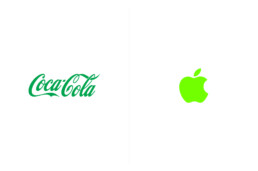
Established brands often lean on color traditions within their industry. Consider McDonald’s with its iconic red and yellow theme, a color combination that’s become synonymous with fast food worldwide. But then there’s Starbucks, boldly breaking the mold with its signature green, a stark contrast to the typical browns and blacks of traditional coffee shops. The choice to blend in or stand out with your color palette isn’t a matter of right or wrong. It’s a strategic decision, a crucial piece of the branding puzzle that needs careful consideration right from the start.
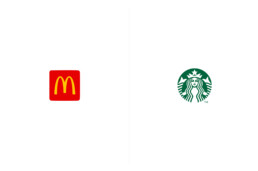
In my opinion, picking the right colors for a brand is super underrated. It’s tough, really tough. Even for pro brand designers, getting those colors just right is a bit of a juggling act. And if you’re new to this? Well, you’re probably going to spill the milk a few times before you get it right. Do designers and brand owners really sweat over this stuff as much as they should? They definitely ought to, because a brand’s color palette can make or break a brand.
Taking some advice from Gary Vaynerchuk’s book ‘Jab, Jab, Jab, Right Hook’, it’s all about giving your audience valuable information. As he says, ‘Give value. Give value. Give value. And then ask for business.’ So, here’s my two cents on how colors work in different industries and their meanings in society’s collective perception. When picking your brand’s colors, choose to go with a color palette that’s similar to other businesses within your niche, or choose a different route altogether, but choose wisely—your colors are a big part of your brand’s story.
